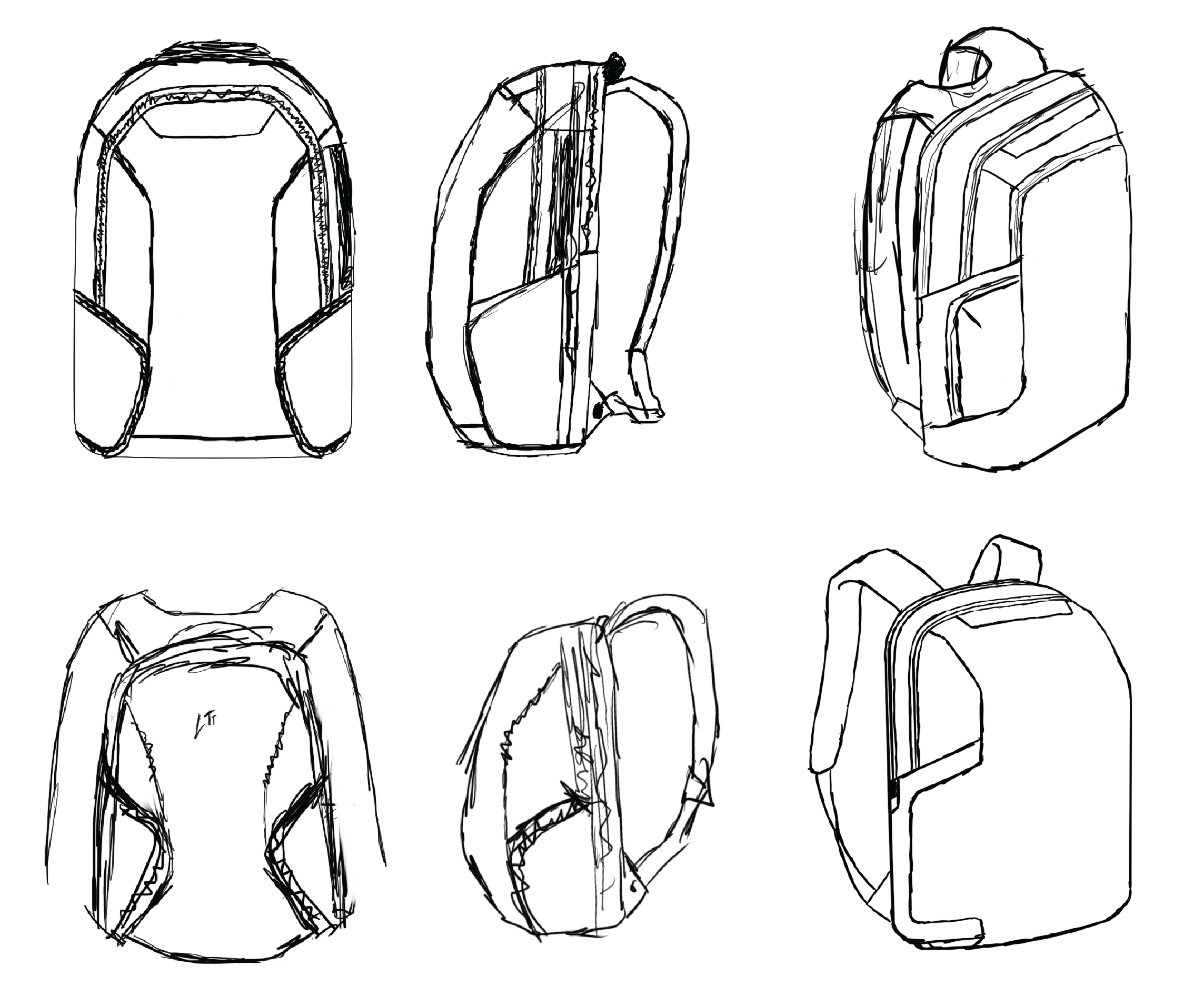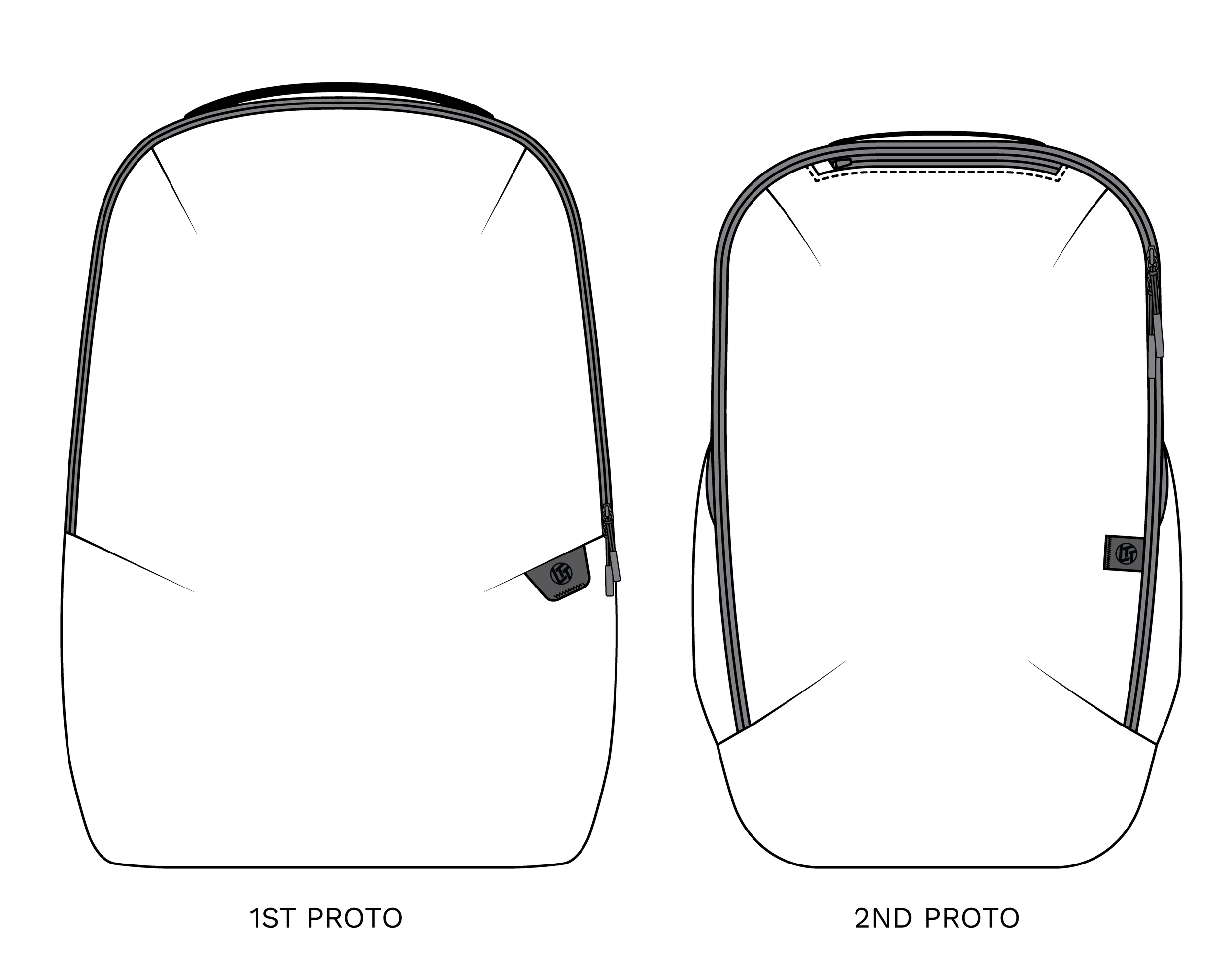LTT COMMUTER BACKPACK
WHY WE DESIGNED IT
The original LTT Backpack (right) was designed to be the last tech backpack you’d ever need—but feedback revealed it didn’t meet everyone’s needs. Users wanted a slimmer profile, better organization, and an external bottle holder. So we set out to redesign it with the community in mind, creating a version that strikes a better balance of form, function, and real-world feedback. With a six-month timeline to hit production, the work began.
The LTT Backpack’s large size and unappealing boxy shape was one of the biggest critique
DESIGN PROCESS
We began by reviewing community feedback and researching competing products to spot design opportunities. It became clear that users wanted purposeful pockets without sacrificing a compact form. I explored ideas through sketches, paper models, and 3D prototypes—each step refining the vision. The goal was simple: create a smarter, sleeker backpack with a more intentional layout.
We went through three major prototypes and extensive wear testing to get it right. The goal was a backpack that could hold its shape and withstand daily use. I refined the size and placement of each compartment with accessibility in mind—whether you're commuting, traveling, or just moving around quickly. Every element of the construction was rethought to ensure it served a clear and functional purpose.
SAMPLING & ITERATIONS
CHALLENGES
Through testing and iteration, we encountered several key challenges. The first prototype felt bulkier than intended, so we refined the shape and locked in the volume at 20 liters. In the second prototype, we finalized the pocket layout and materials, and made adjustments to the water bottle pocket—widening it by shifting the front zipper forward. By the third prototype, the design felt dialed in and ready for production.
CONCLUSION
The LTT Commuter Backpack had a strong launch, with over a third of the initial inventory selling within the first week and steady sales growth continuing throughout the year. Community feedback highlighted the improved look and more compact form factor, with many appreciating the thoughtful refinements over the original design. With more time, I’d explore adding a silicone strip inside the bottle pocket to prevent slipping and reworking the internal pocket layout to better match evolving user needs. Overall, it was a successful redesign that not only built on the legacy of the original LTT Backpack but also gave me valuable experience in managing iterative product development and balancing user feedback with design intent.





























